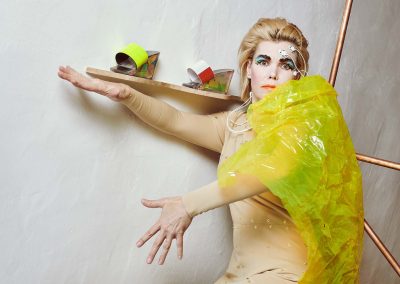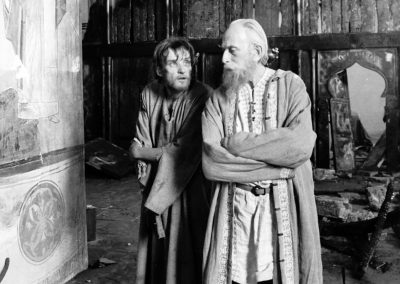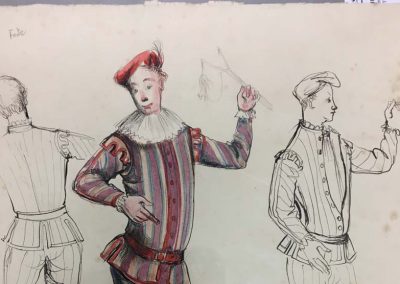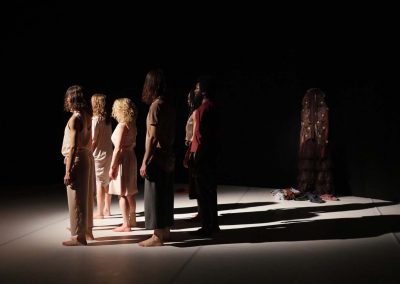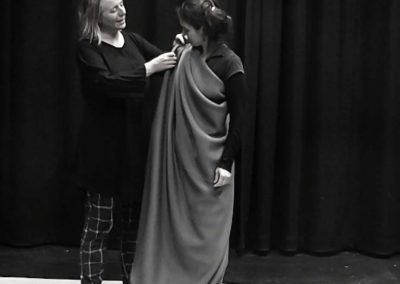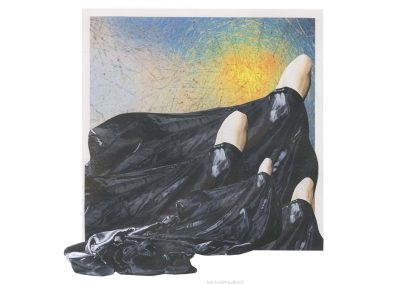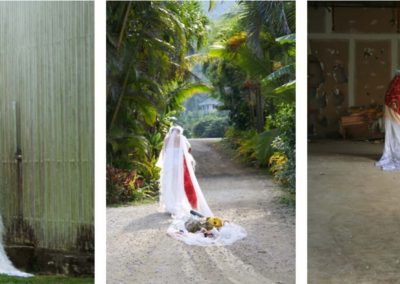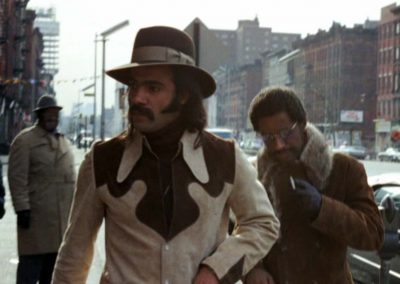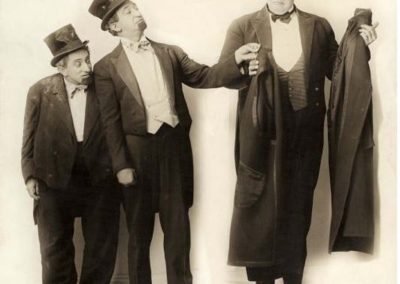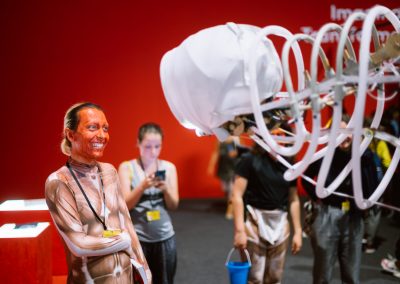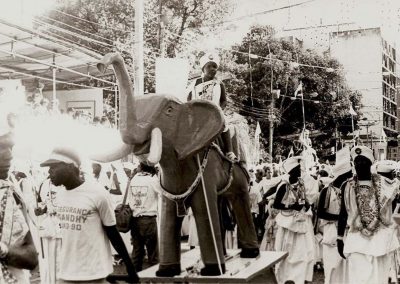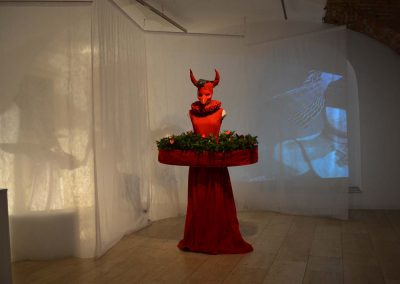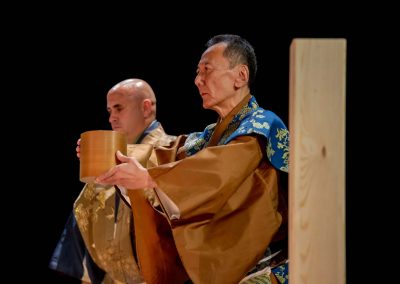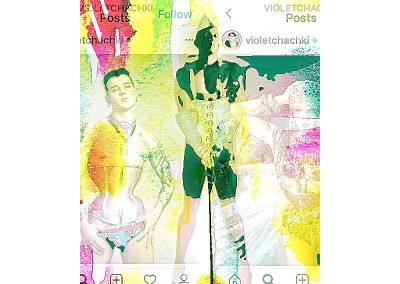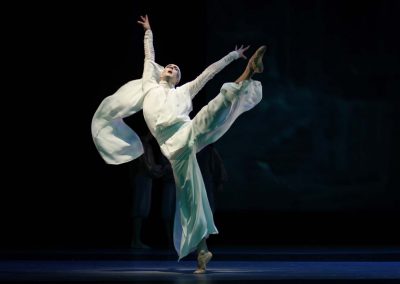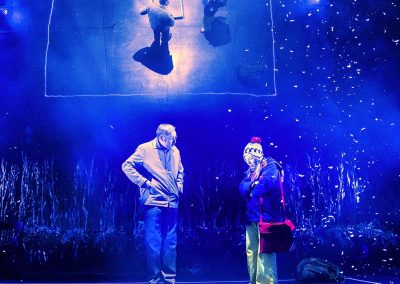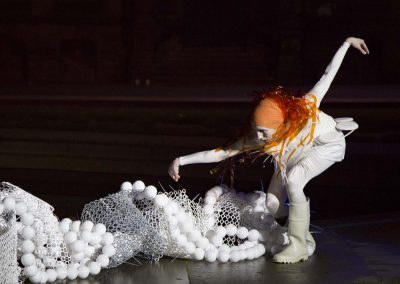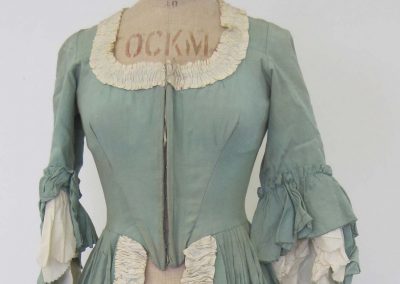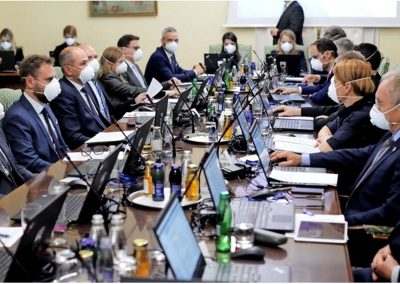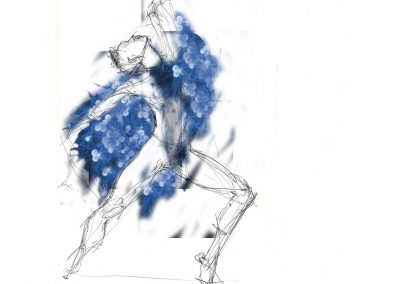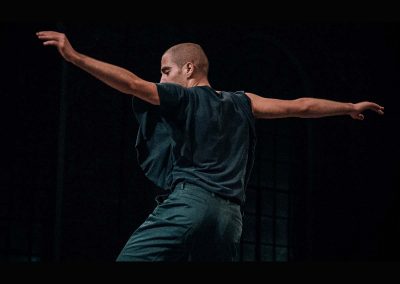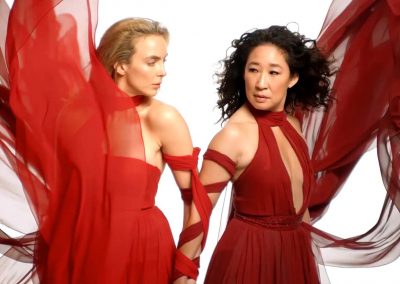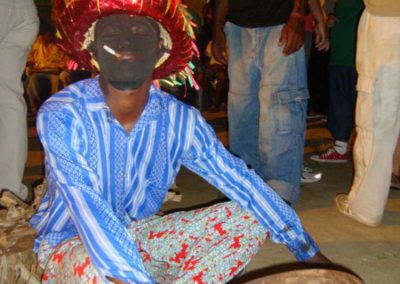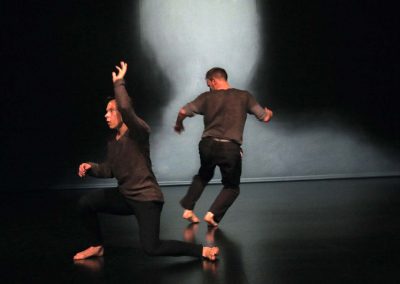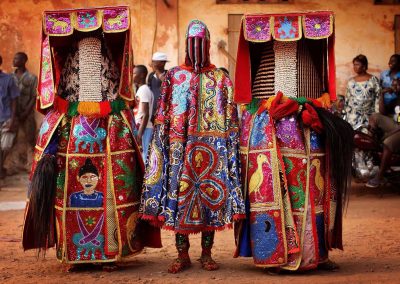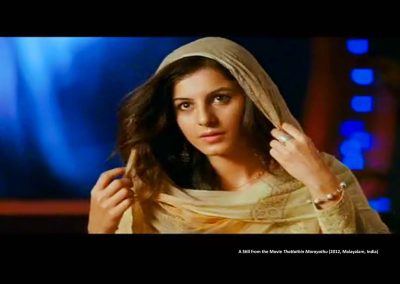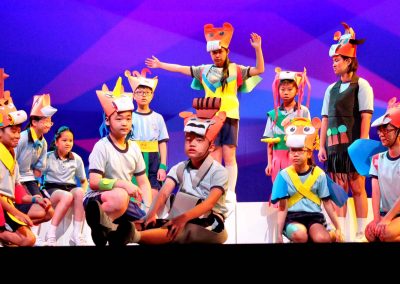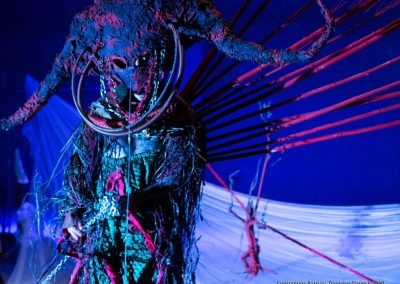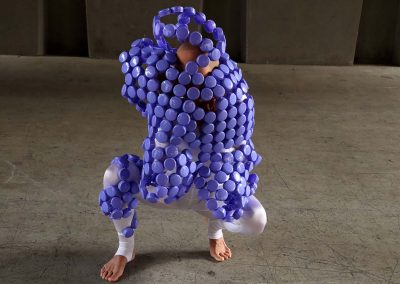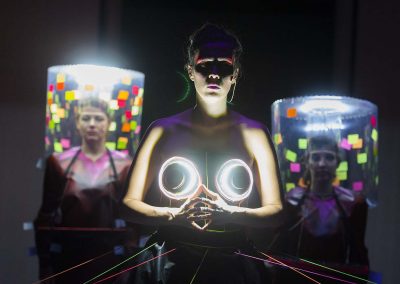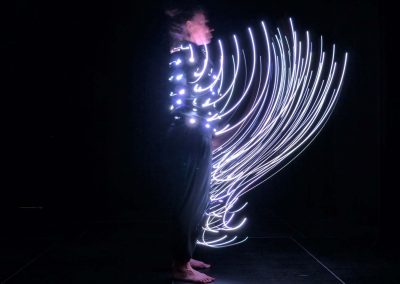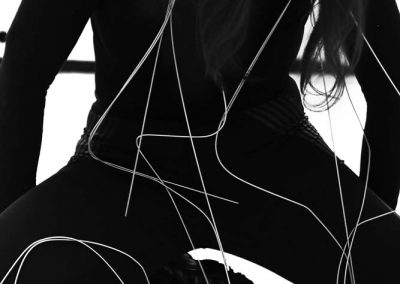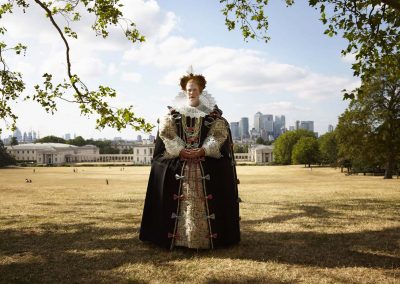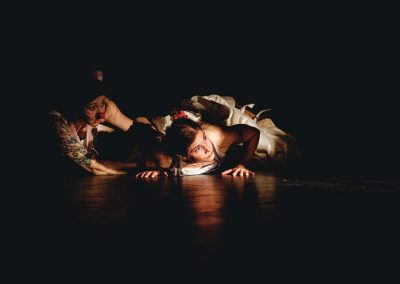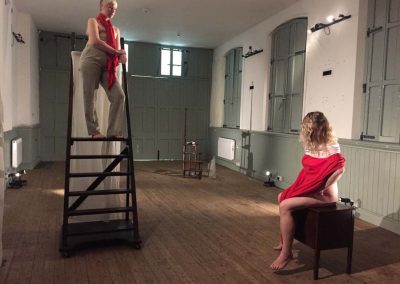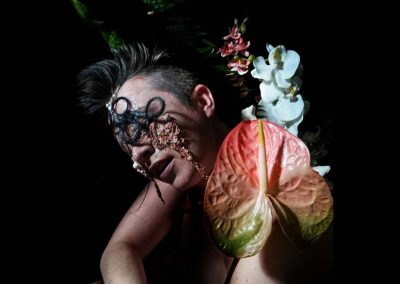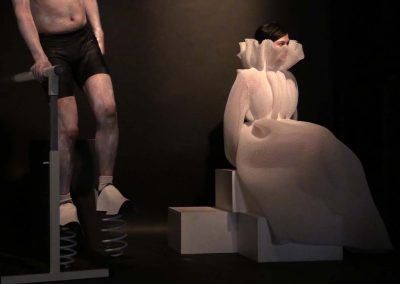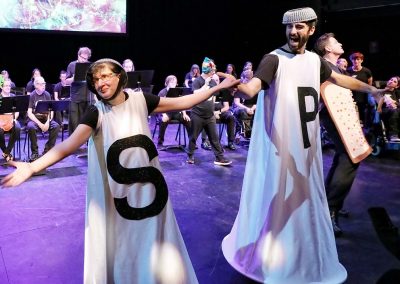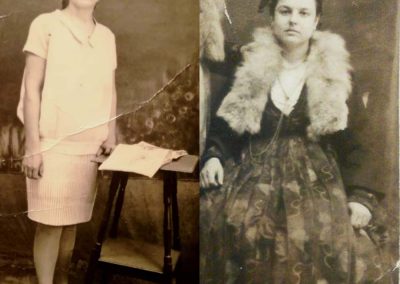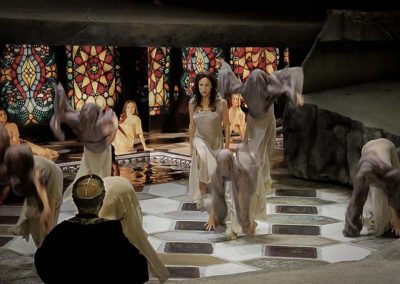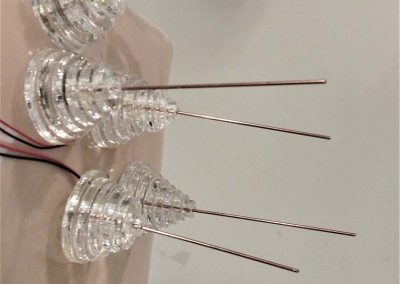
WELCOME TO CRITICAL COSTUME 2020 CONFERENCE
AND EXHIBITION COSTUME AGENCY!
In the recent months it was fully confirmed that not only humans have agency. Not only humans are capable of changing things, of influencing, of ‘performance’. We saw how one of the tinies things – a virus – can change behavior of whole nations and our daily lives and destinies very dramatically. And we understand and see very clearly that we, humans, are only an element in a network of things, where agencies are so intertwined, so complex that they are barely visible.
And it is time to rethink how we see agencies – what we see as passive, as ‘in service’, as merely present, what we see as in charge, as strong, as powerful. And to understand human as not separate to nature and objects and events, nor ‘in control’ in simple ways.
Costume, that ‘thing’ that takes a shape of a human body, that ‘thing’ that mimics and expresses and hides human behavior and character – is one of those things that illustrate the complexity of agencies the best. Always between materiality and behavior, between made and found, protecting and revealing… always in between human and non-human.
So, we, me and Christina, understand that there will be always agencies working for us and against us – but that one has to continue to work on what one believes in, despite things. And we decided to continue organizing Critical Costume 2020 despite the obstacles. Critical Costume is there mainly for people to meet, to exchange, to grow their thoughts and their creative efforts, to share… This years Critical Costume will take shape of:
- The Video Library with presentations in critical and artistic thinking on costume design from all over the world. Available online, 60 videos, searchable on keywords, permanently available. We hope you will share it with your colleagues and students.
- The Exhibition features artists working with costume as their main tool, often as a starting point of a performance, intervention or installation. The Exhibition opens August 21st online and presents the work of 35 artists. Permanently available online.
- The Working Groups will discuss the topic of ´the agency of costume´ based on the 60 videos. Participators are more than 300 persons from all over the world, organized in 40 online groups in the period August 21st till 23rd The groups are small, intimate for close dialogue and exchange. The groups are all fully booked.
- The Panel Discussion will follow online, one each in October, November and December 2020.
- The Costume Agency Workshops are two week workshops: The workshop format involves three groups of each two stages, four designers and four performers for ten days of rehearsals, over a period of twelve days of explorations, dialogue and development.Due to their character are postponed and will be done ‘live’ in Oslo in August 2021
And we would like to thank our team and all the participants for the flexibility and the hard work invested in these events: everyone jumped in on short notice through media and forms not very well known to us! And we are grateful for all the courage and determination that followed the preparations!
We hope you will enjoy watching, following and joining our events!
Thank you for being with us!
Christina Lindgren and Sodja Lotker
Critical Costume 2020 Conveners
Video Library
The Critical Costume 2020 Conference Costume Agency Video Library is one of the main parts of the conference. It consists of recorded videos of paper presentations (15 minutes) and flash talks (8 minutes). The selection of the contributions includes a blind peer review process.
You can filter by categories or search by presenters name.
Some categories have numerous presentations. Please browse the complete collection by using the page numbers below.
Open Call + Peer Reviewers
Call for Contributions
Critical Costume 2020: COSTUME AGENCY
Oslo National Academy of the Arts (KHIO), Norway
Workshops: 10-21 August 2020
Conference and Exhibition: 21 – 23 August 2020
We invite artists, researchers, scholars, designers to submit their proposals for workshop-, conference- and exhibition participation
Applications deadline: January 5th, 2020
“The veil is music because it is the artifice through which a body extends itself to engender forms into which it disappears.”
Jacques Rancière
In his essay the Dance of Light (2011)about Loie Fuller’s innovative dance practice, and poet Stéphane Mallarmé’s infatuation with it, Jacques Rancière gives special focus to the role of dress in a redefinition of avant-garde art. Following Mallarmé, Rancière calls the dress a veil, in order to uncover its potential and says that “(t)he veil is not only an artifice that enables one to imitate all sorts of forms. It also displays the potential of a body by hiding it. It is the supplement that the body gives itself to change its form and its function.” Here the dress of the dancer enables her to disappear, it enables the body to be dislocated and to change. This is why the ‘veil’ is the ‘music’. It is an agent that provides new realities of the body to emerge; it performs.
A garment in contemporary performance goes even beyond an agent activating abstract abilities of presence of the body on stage. Costume interacts with the other performance elements in extremely complex ways. It is a carrier of stories, executor of political activism, it becomes an embodiment of conceptual thinking, a critical questioning. Costume does not only perform via the body; it extends to space, landscape, and audience. It is an actor in itself. Costume is communication and communicated, it is a tool for research, it dances phenomenologically, it affects us kinesthetically. It is an agent. It is a force field. Costume performs. It does things. And the costume designer becomes director, thinker, researcher and shaman – constructing, deconstructing and reconstructing realities, different ways of being, into the ‘unthinkable’.
Critical Costume 2020 will focus on the agency of costume in performance, costume as the main performer and the costume designer as the initiator of performance. Following Costume Agency, a three-year artistic research project by Christina Lindgren (KHIO, Oslo) and Sodja Lotker (DAMU, Prague), Critical Costume 2020 will explore different ways in which costume performs, different genres and formats it initiates, but also specific dramaturgical strategies that are ingrained in costume, and are probably yet to be used to their full potential.
Critical Costume 2020 (CC 2020) at the Oslo National Academy of the Arts (KHIO) consists of workshops, a conference, and an art exhibition:
We invite costume designers, researchers, and other artists working with costume design as performance, as performative installation, as performative sculpture, as community gathering, as research, as a way of thinking, as a way to communicate, as music, as the bridge into the ‘unthinkable’ to submit their proposals.
CC2020 WORKSHOPS: August 10 – 21, 2020. Within four parallel workshops over the course of two weeks, designers and artists will have an opportunity to develop a performance from their already existing costumes and objects with local performers provided by the organizers. Each workshop will include rehearsals, dramaturgical consultations and group feedback sessions. The last day will offer a public presentation of workshop findings for the participants at Critical Costume 2020 Conference and Exhibition.
To apply for a workshop, please submit:
- Presenter’s short bio up to 300 words.
- Photo or drawings of your garments
- Description of project up to 300 words: describe your visions for a performance embedded in the garments or/ and ideas for what to try out in the workshop.
- 4 images, video links, links to your website.
CC2020 CONFERENCE: August 21 – 23, 2020. CC2020 CONFERENCE will comprise scholarly and artistic presentations on current projects and/ or research. Presentations can have a multiplicity of formats: academic papers, artistic presentations, short interactive workshops, Flash Talks, video essays and other formats will be accepted. Presentations will vary from 5-20 minutes. The exact length of your presentation will be decided after the confirmation of your participation (based on the final program).
To apply for the CC 2020 conference, please submit:
- Presenter’s short bio up to 300 words
- An abstract of your research/project up to 300 words
- 2 images (for project-based presentations), video links, links to your website.
CC2020 EXHIBITION: August 21 – 23, 2020. CC2020 EXHIBITION will present artworks that focus on how costume shapes performance, where the costume initiates or is one of the main initiators of the performance. Please describe how a costume performs in your project, or how your proposed performance should be made accessible to the exhibition visitors (via text, video or other tools).
The exhibition may include (but is not restricted to): costume, sculpture, performative sculpture, (wearable) object, installation, performative installation, live performance; digital video, digital imagery, animation; research websites, web portals, web radio, blogs, vlogs, podcasts; interactive design for performance and new forms of interactive artworks.
To apply for the CC 2020 exhibition, please submit:
Artist’s short bio up to 300 words
Project proposal up to 300 words, max. 3 images/sketches of the proposed idea
Max.3 images, video links of your existing artworks, and links to your website
Technical specifications for the submission of materials for the exhibition:
- Your video should be uploaded to Vimeo, and should not exceed 2 MINUTES in length (trailer).
- 3 images of the proposed artwork for the exhibition. Please include title, materials, dimensions, year of production.
- Images should be saved in JPG or PDF. Maximum data size of your entire application is 10 MB.
- Do not send the original works.
- CC2020 is not responsible for the production/shipment fees and insurance in case of damage and loss.
CONVENORS
Prof. Christina Lindgren, Oslo National Academy of the Arts and
Dr. Sodja Lotker, Prague Academy of the Arts
EXHIBITION CURATOR
Prof. Yuka Oyama PhD, Academy of Design & Craft University of Gothenburg
CONFERENCE MANAGER
Camila Svingen, Oslo National Academy of the Arts
HOW TO APPLY
All proposals must be submitted via email to: criticalcostume2020@gmail.com
All proposals will be peer reviewed. We welcome you to submit your applications in more than one format.
DEADLINE FOR SUBMISSIONS
January 5th 2020
ANTICIPATED SCHEDULE
Notification of acceptance: February 15th, 2020
Applicants to confirm participation: March 15th, 2020
Preliminary program: April 2020
For conference – deadline for uploading the presentations: August 19th, 2020
For the exhibition – last date for the arrival of your artwork: August 19th, 2020
FEES
All delegates attending this 3-day event will need to a pay a registration fee, which will include catering. Significant discounts will be available for postgraduate researchers and independent artists. There will also be a 1-day registration option available. Each participant is responsible for their travel and boarding expenses.
The event language is English.
The Call for Contributions was published on the webpage of Critical Costume and Costume Agency Artistic Research Project.
PEER REVIEWERS FOR CRITICAL COSTUME 2020 CONFERENCE WERE:
Donatella Barbieri, Emily Brayshaw, Jessica Bugg, Christin Essin, Sarah Gilligan, Veronica Isaac, Christina Lindgren, Drake Stutesman, Siobhan O’Gorman, Sue Osmond, Sofia Pantouvaki, Natalie Rewa, Marlis Schweitzer, Fausto Viana, Astrid von Rosen, Sodja Zupanc Lotker
List of presenters
WORKING GROUPS
About the Working Groups
The Critical Costume 2020 Conference Costume Agency includes almost 40 Working Group sessions online on August 21st – 23rd. Each working group is based on one or two presentations/flash talks from the Video Library. There will be a total of 12 participants in each Working Group. The small size of the groups is chosen to allow inclusion of all participants in the discussion. While the Working Groups should take the 1-2 presentations from the Video Library as the starting point, we hope that they will go deeper into the specific topic, beyond the specific videos. The group will allocate time to the main theme of the conference, the question ‘how costume performs’ in relation to the specific topic and presentations.
A report from the discussions in each group, will be published on this webpage two weeks after the conference.
Working groups overview
For your conveniance you can download the Working Groups overview here
Credit Artwork: Darius-Robin Dolatyari-Dolatdoust
Photographer: Manon Raoul
« WEARING THE DEAD », Costumes / Installation 2019
PANEL DISCUSSION
Panel Discussion # 1 Monday August 16th 2021 at 4 till 5.30 pm CET
Panel Discussion # 2 Monday August 23rd 2021 at 4 till 5.30 pm CET
Panel Discussion # 3 Saturday August 28th 2021 at 4 till 5.30 pm CET
About the Panel Discussions
The final part of Critical Costume 2020 Conference and Exhibition will be three panel discussions. Each panel will focus on topics that have arisen within the Video Library and Working Groups. The discussions will take place online.
Critical Costume 2020 Panel Discussion # 1 Monday August 16th 2021 at 4 till 5.30 pm CET Costume Performance: what costume does?
In this panel we will talk about different ways the costume performs, how it sparks imagination, triggers references, but also how it moves the performers and initiates action. From cultural-identity reference to functional potential of the garment and to sensual experience of the material costume is part of the complex relationships on stage. Some of the relationships are semiotic, some compositional, some phenomenological but most of them are so entangled with each other that it’s hard to pin them down.
Together with the invited speakers – a choreographer, a designer, and a theorist, Sally Dean, Linnea Bagander, and Donatella Barbieri, – we will look at these relationships and explore specific ways costume performs.
Critical Costume 2020 Panel Discussion # 2 Monday August 23rd 2021 at 4 till 5.30 pm CET Costume futures: designing new materialities
This panel will discuss the role of costume in investigating (re)newed bodily materialities in an era of climate crisis, bio-technologies and theories of new materialism. In particular, the panel will share examples from their practice that explore the role of material in thinking though ideas of ‘body’ and the changing perspective on what costume offers as a field of study to interdisciplinary questions of appearance, embodiment, and human-technology interfaces.
Together with our invited speakers – Charlotte Østergaard and Tanja Beer – we will share provocations on the future interrelationship between body, material and costume practice.
Critical Costume 2020 Panel Discussion # 3 Saturday August 28th 2021 at 4 till 5.30 pm CET Costume Performance: unfolding a vision embedded in a garment
This panel discussion will focus on costume as a starting point for a creative process towards a performance. The starting point is crucial for the development of any performance, as it sets the premises and the focus for the collaborative work. Costume is an untraditional initial material for a performance. If costume is present as the main element from the start, how does that set the premises for creative process? What are the approaches, methods, and tools to unpack the potential embedded in the garments? How to compose with all expressions as light, sound, spoken words, movement, and space when costume is the first element?
Together with the invited speakers – three designers generating various forms of performative art, Fruszina Nagy, Fredrik Floen and Signe Becker, – we will explore and discuss approaches to the process taking costume as starting point.
If you would like to attend, please send an email to: criticalcostume2020@gmail.com and we will send you the links. We hope to see you there!
The panel discussions will be recorded and published after the event (here and on our Youtube-channel).



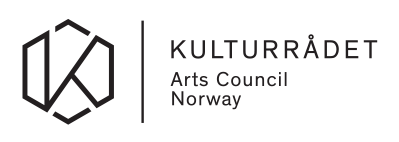
© 2020 Costume Agency Research Project | powered by 3C Group | Privacy Policy | Team | Contact by mail


